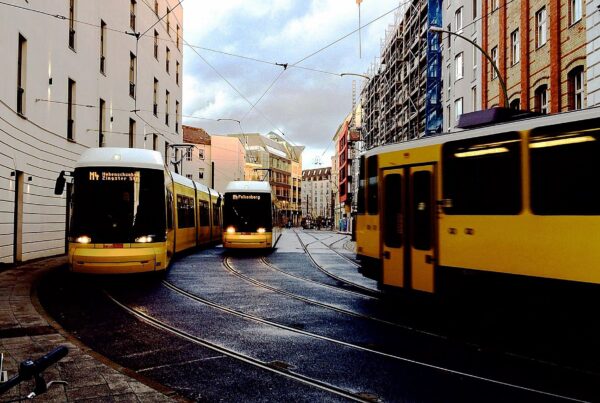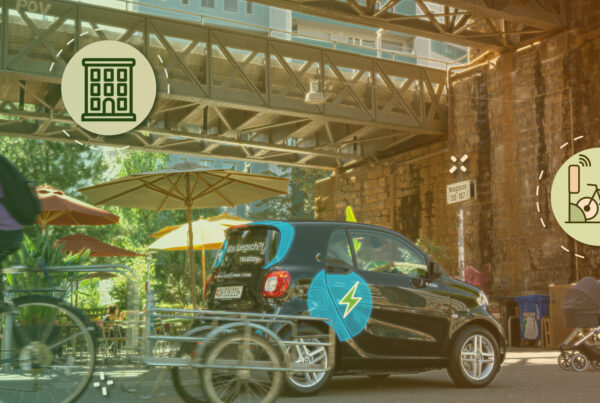The Mobility Hub
Your weekly guide to the latest in shared mobility
SUMC News and Announcements
This week’s issue proves that mobility innovation is unstoppable.
SUMC is working with the Federal Transit Administration (FTA) to run the Mobility Innovation Collaborative (MIC) program, and we are thrilled to launch the Mobility Innovation Collaborative website! We hope this becomes a valuable resource for people across all transportation organizations and that it aids in innovative mobility solutions across the United States.
The website is a platform designed for Integrated Mobility Innovation (IMI) and Accelerating Innovative Mobility (AIM) Grantees, and for anyone exploring innovative mobility solutions. Visit the MIC website to stay up-to-date with stories and lessons learned from IMI and AIM Grantees.
The Summer of 2021 has been ripe with new pilots and programs.
Spin rolls out shared e-bikes and scooters in Fort Collins.
Mobility goes fare-free and on-demand in Southern CA.
Guess what else is on the Learning Center? The 2021 Mobility Justice Spotlight.
From our friends at SHARE-North: A Planner’s Guide to the Shared Mobility Galaxy
Created specifically for planners and municipal decision-makers, this 250-page book breaks down the basics of Shared Mobility from forms and definitions to the impacts and potentials of carsharing, ridesharing, bikesharing, Mobility as a Service, mobility hubs, and more. Download it here.
And we just had to share this Webinar:
Pinpointing Traffic Signals That are Needlessly Warming the Earth and Driving People Crazy | September 22nd, 1:30pm EST/10:30am PST. Register at Inrix.com.

Mobility Justice
LADOT conducted a gender equity study to analyze the conditions women face using public transportation and, to no surprise, inadequate infrastructure—broken sidewalks, lack of streetlights, etc.—keep women from feeling safe. Things are even worse for Indigenous, Latinx, Black, and Asian females who suffer from historic underinvestment and racist zoning policies.
“All of the problems people worry about when they invoke gentrification—displacement, police action against people of color, lack of investment, predatory landlords—are also present in segregated neighborhoods, often even more so.” The real problem, according to Vox, is the concentrated poverty driven by this segregation.
While the Federal Highway Act of 1956 might have been in your textbooks, the long-standing history of racist transportation policy probably wasn’t. The Conversation fills in the blanks from exclusionary zoning to redlining, and points out how removing these concrete barriers can sustainably revitalize our cities for all.

Ridehailing/Carsharing/Carpooling
Lyft, Uber, and other gig-based companies are ramping up efforts in Massachusetts to “define drivers as independent contractors rather than employees” (per TechCrunch) after getting the greenlight from the state’s Attorney General, mirroring California’s Proposition 22 measure that was recently deemed unconstitutional by CA’s superior court.
Your Lyft ride may show up with no driver behind the wheel—in the near future that is. This is what Motional envisions with the unveiling of its upcoming autonomous Hyundai Ioniq 5 EV and plans to start a public driverless ridehail service through the Lyft app in select cities by 2023.
Albany, NY’s Capital District Transportation Authority has an on-demand microtransit service, it started in February 2020 at the beginning of the pandemic, which aims to compete with Uber and Lyft by offering affordable door-to-door trips with convenience. What’s next for the agency? An electric carsharing service slated to begin this fall.

Bikesharing & Micromobility
Like a wheel with a hub and spokes, public transport hubs need complementary services and infrastructure to help people get where they need to go. In comes micromobility which, according to Centre for London, can make it happen but dedicated lane networks and nearby bike parking facilities must be easily accessible first.
Forgo the van by using the new e-cargo bikesharing service now available in three London boroughs (Hackney, Islington and Tower Hamlets) aimed at helping residents and businesses get goods transported through a set of green and electrified cargo-hauling wheels.
COVID-19 roiled the transportation sector when it hit cities last year, leading officials to prioritize socially distanced, outdoor mobility with more space for walking and biking. Unlike cycle-friendly places in Europe, US metros met these street changes with both praise and criticism that feels short of a mobility revolution.

Transit
California is about to make new AVs emission-free by 2030 (as long as Governor Newsom signs the bill headed to his desk). Senate Bill 500 was passed by California lawmakers to help close current policy gaps phasing out fossil fuel-burning vehicles and ensure the future of AVs is climate-friendly.
Population-wise, Toronto is up there with North America’s largest, and now it can boast a subway expansion plan to match with transit and subway lines being expanded, new ones being developed, and a regional rail network connecting it all in Greater Toronto and Hamilton Region.
The promise of bus rapid transit has been realized in greater Boston, as bus improvements from electrification to redesigned streets with bus-only lanes have led to increased reliability and ridership. Want to see it for yourself? Just watch the video!

Technology
With the UK Committee for Climate Change recommending 150,000 new EV charging points across the UK by 2025, Shell is stepping up with plans to add 50,000 of its Ubitricity EV chargers in the next 4 years, and 500,000 globally by 2025.
As far as charging up the US, startup Revos has received $4 million in funding and now plans to bring in one million of their AI-technology enhanced EV chargers in the next 3 years, and they’re eyeing emerging markets too.
Riding the light rail in Sacramento is now as easy as paying for your morning coffee with a contactless fare option from the Sacramento Regional Transit District (SacRT)—and those fares are only $1 by the way (with a $7 daily max) until the end of September.

Sustainability
The Massachusetts Transportation and Climate Initiative (TCI) is scheduled to take effect in 2023 to cut vehicle emissions. But efforts by the Massachusetts Fiscal Alliance have the Attorney General’s office certifying a ballot question that prohibits the state “from imposing any tax or compliance that would reduce gasoline supply.” (Counteracting the TCI). So it all comes down to voters…
Connecticut was set to comply with state law to reduce GHGs to be 10% below 1990 levels by 2020 (scaling up to 45% below 2001 levels by 2030), but the upward swing of vehicle miles traveled has put the state off track—and the commissioner of the Department of Energy and Environmental Protection is calling it a wake-up call.
We are in a climate crisis—meaning the New York City subway flooding isn’t a one-off, it’s the reality we have to face with global warming. Our best defense: investing in public transit to keep systems safe for riders, even in extreme weather conditions, while slashing carbon emissions so our reality doesn’t get even worse.
Project Funding Opportunities
RFP: Emergency Management Plan Template for Michigan Rural Public Transit Agencies
Michigan Department of Transportation
Deadline: September 27
RFP: Community Mobility Read-to-Launch Grants
National Center for Mobility Management
Deadline: October 15
Invitation for Bid (IFB) 21-05-385 Purple Line Bus Rapid Transit Construction Project
Indianapolis Public Transportation Corporation (IndyGo)
Deadline: October 28, 2021
Email Dave Adamson at [email protected]









